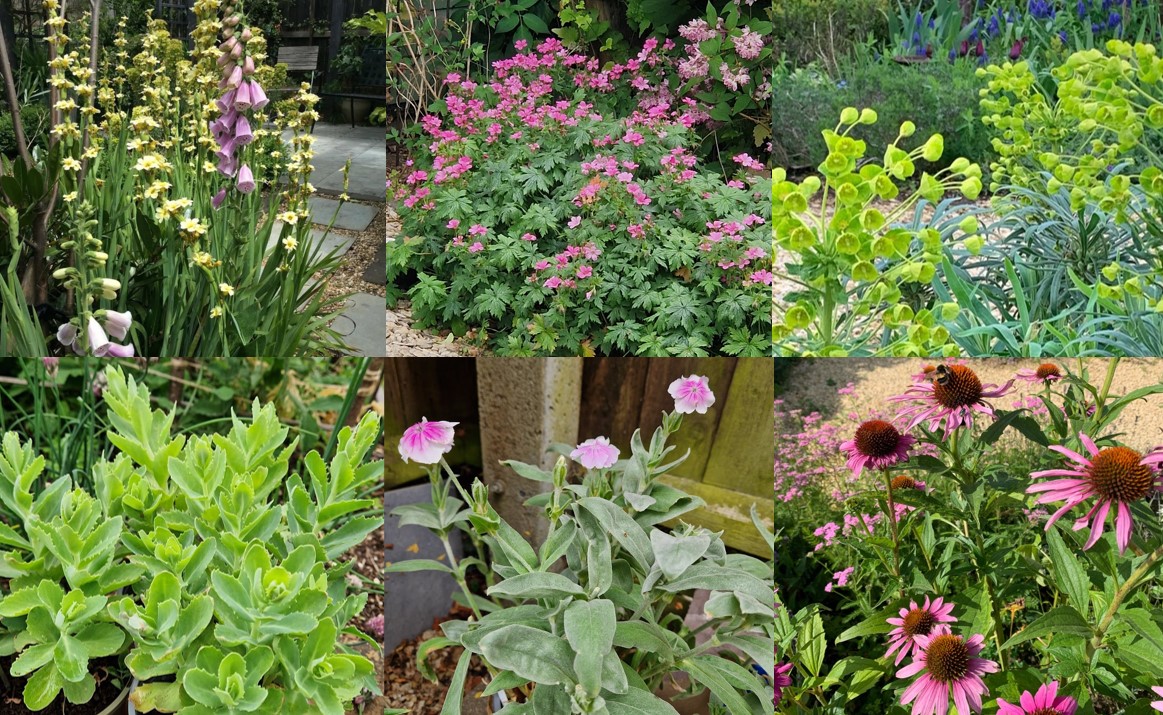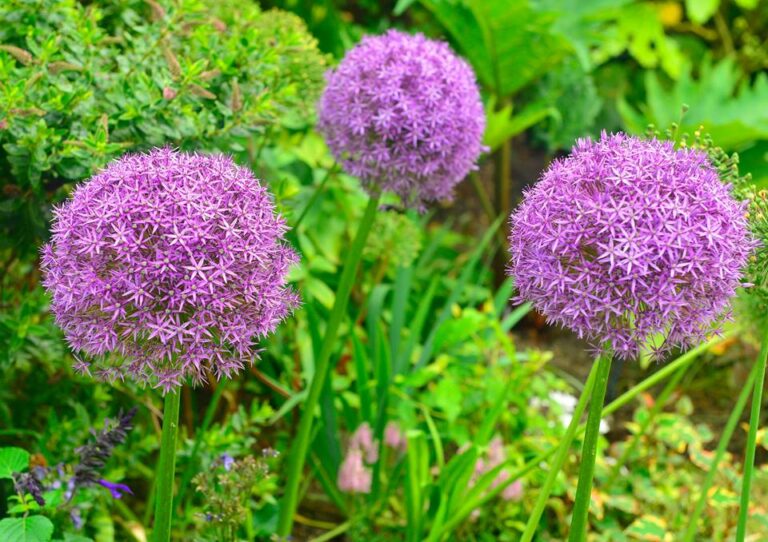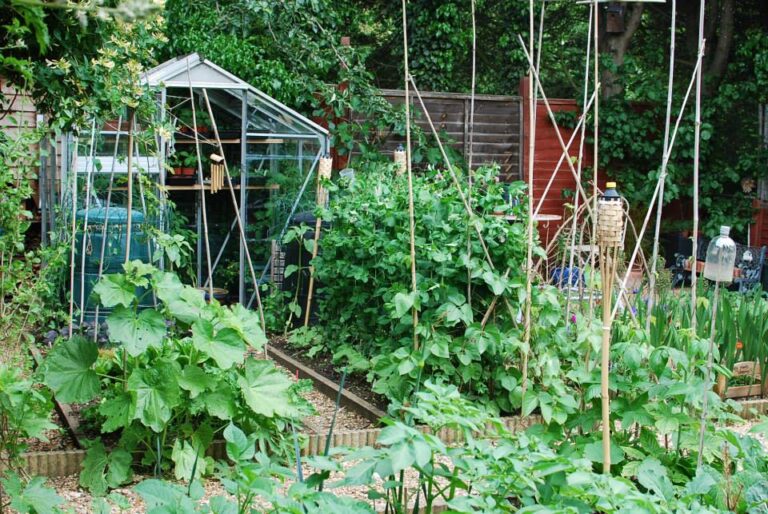My favourite plant
Some of our favourite plants, that we’ll be selling at the Feast market.
When you’re new to gardening or just new to the area, visiting open gardens and seeing what grows well in your neighbours’ gardens is a great way to get started. Even as experienced gardeners, with the changing climate and the need to garden more sustainably, it’s really useful to discover new inspiration for plants that can be relied on to work hard. Tough plants that will cope with our summer droughts and bounce back after wet, and occasionally excessively cold, winters. Hard workers that will provide colour or structure over a long period, or that will thrive in that difficult spot. We asked our 2024 gardeners, and our committee members to tell us their favourites. We’ll have all of these on sale on our stall at Histon & Impington Feast Market (Sunday 29th June, 12-4pm), so make sure you bring your shopping bag and visit us early!
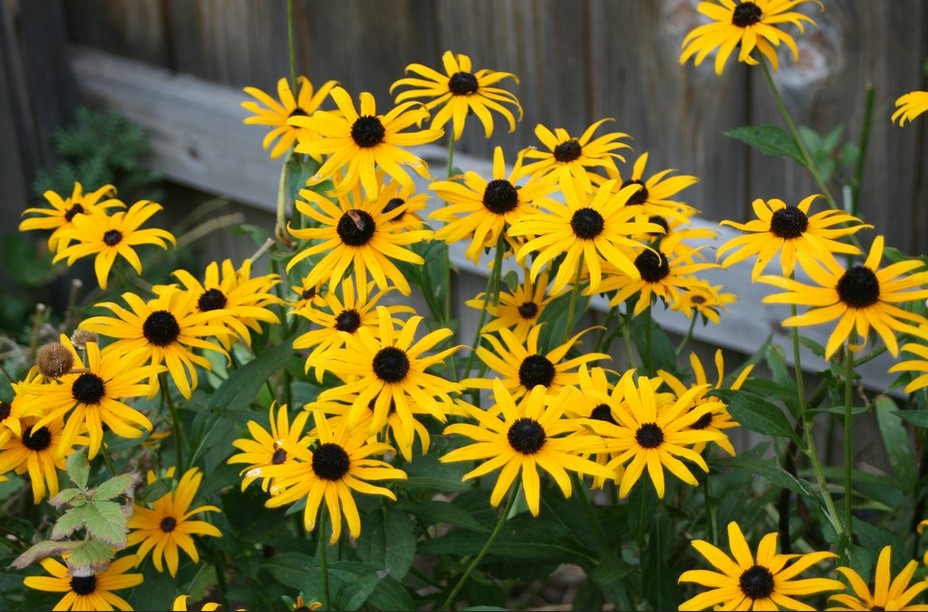
Orange coneflower (Rudbeckia fulgida)
I love this bright, cheery and easy to grow perennial rudbeckia – it’s super easy to grown and divide meaning one clump can very soon become a glorious sea of yellow running through your garden. It sometimes wilts in the heat, but will usually come through and flowers well from July to nearly the first frosts. Make sure you leave the tall black seed heads to stand through the winter – they look stunning when tinged with frost, but most importantly the gold finches will flock in to feast on the seeds.
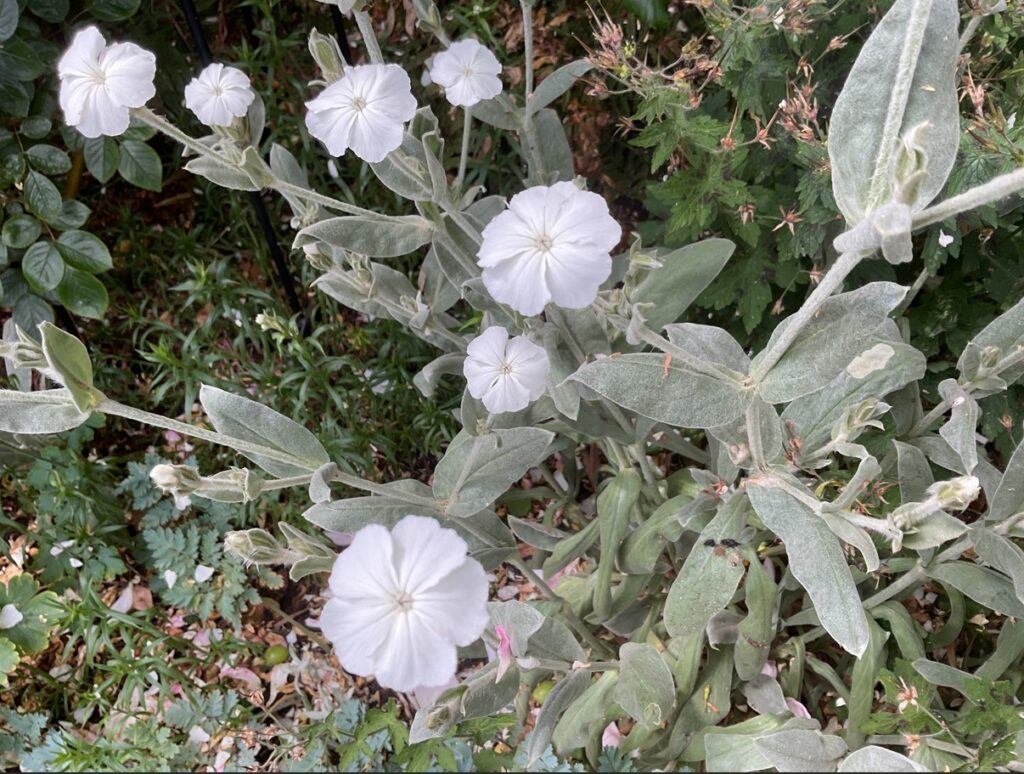
Lychnis – white
There is a bit of a love-hate relationship with lychnis in my garden. I have been growing it for around five years. The original seed was for a pure white variety to match the theme of my garden; a theme that has gradually morphed into pink – like the lychnis!
Most does come up white but some are flushed with pink. I’m not sure if this is a result of the weather or gene expression, as of course the deep pink variety is much more common. It’s not the colour however that causes my ire. It’s that they self seed far too successfully. A bit like forget-me-nots, they grow in every crack in every path. Maybe they should be named never-lost-lychnis!
They are biennials (like foxgloves), grow anywhere, especially good in hot sunny spots. Simply pull out any in the wrong place and don’t let the pink ones self seed if you’re as fussy as me!
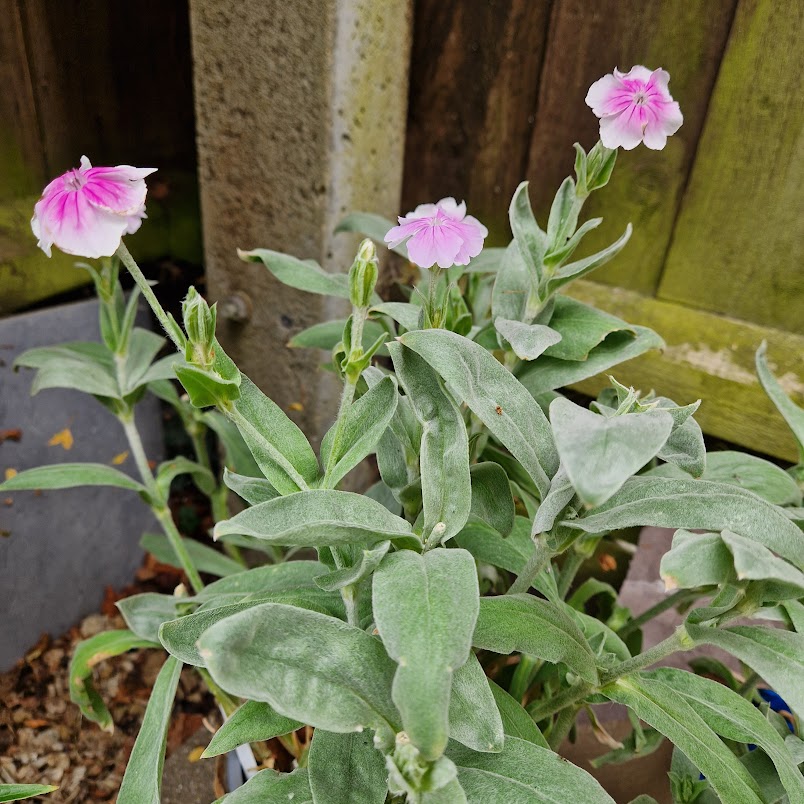
Lychnis – pale pink
Like the more common magenta coloured ones, these are hardy, easy to grow and cope with poor conditions including full sun, neglect and not a lot of water. They last a good while in flower. White with a pink centre, these are more unusual. They brighten up a flower bed during the day, and stand out on dull days and at dusk. The simple flower makes them attractive to insects.
They self seed very happily, but are not intrusive and easy to weed out if you don’t want them.
A case of what’s not to like.

Pink hardy geranium/cranesbill
My mum gave me some of this plant nearly 40 years ago, when I had my first garden. She told me it would grow anywhere and flower all summer, so ideal for the tiny space I had back then. Since then, I’ve moved it from house to house, dug and divided it countless times, and use it all around the garden. It seems to thrive in full sun and virtual full shade, clay soil and summer drought. It flowers non-stop through the summer from the first flush in May. The leaves are a lovely bright green and the plant forms a nice neat mound. Towards the middle of July it can start to get a bit leggy. I just cut it down really quite severely, water well, and within a few weeks it is back flowering.
Truly a stalwart of the garden.

Sedum – Autumn Joy
I love this plant almost more for the foliage than for the dark pink flowers that come in late summer early autumn and are very attractive to pollinators. In early to mid summer it forms a neat, bright, greyish green mound of fleshy leaves, that seem to tone well with any colour in the borders from pink to bright orange. It responds extremely well to a ‘Chelsea Chop’ in early June (cut all stems down by about a third) and this helps it to stay more compact when in flower. Incredibly reliable and putting up with everything our weather throws at it.
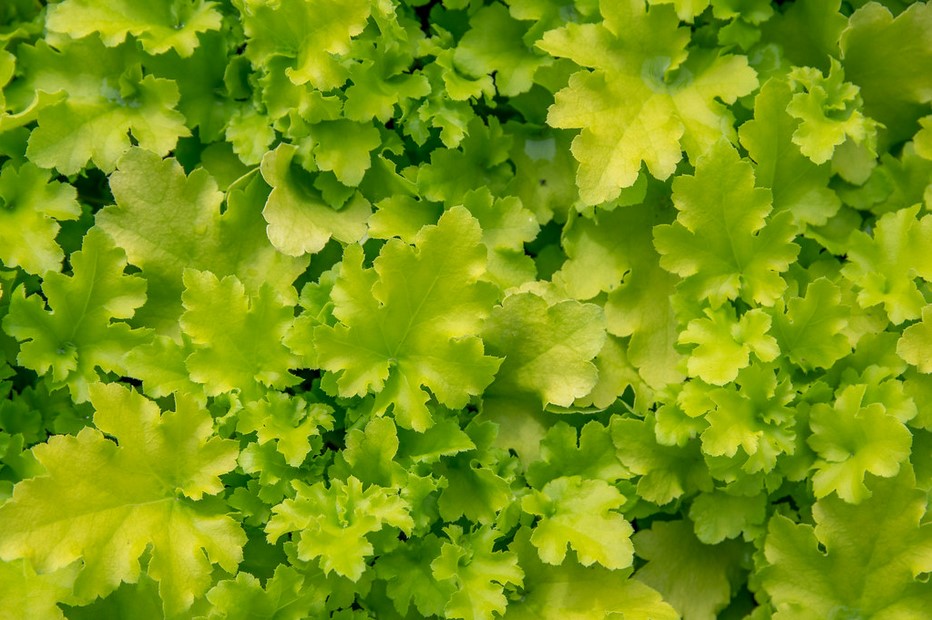
Heuchera – Lime Marmalade
As with all heuchera, these make compact rounded leafy clumps, with leaves that give colour even in the winter. They prefer dappled to light shade, but I have found they will grow even in full shade and a drier soil. The Lime Marmalade is a gorgeous bright, zingy lime green colour that I use to brighten up my shady borders. The delicate summer flowers are attractive to bees. Heuchera are easy to propagate, so one clump can be extended easily.
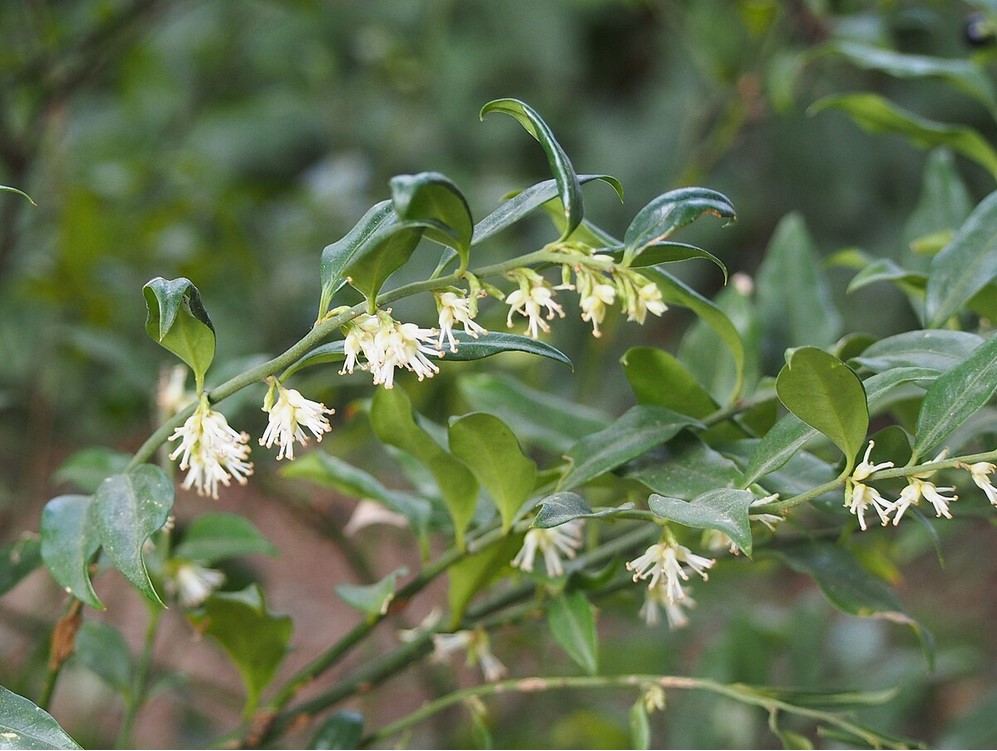
Sweet winter box – Sarcococca
This evergreen shrub grows to about 1 metre and has the most wonderful scented white flowers in the depths of winter. It thrives in partial to full shade. Its great for underplanting, and in my garden I have it growing right up underneath trees and hedges and a north facing wall. As it matures it will slowly spread sidewards, but stems are easily pulled up (and could be used to create new plants). Plant it in that very awkward spot in your garden where nothing seems to grow!
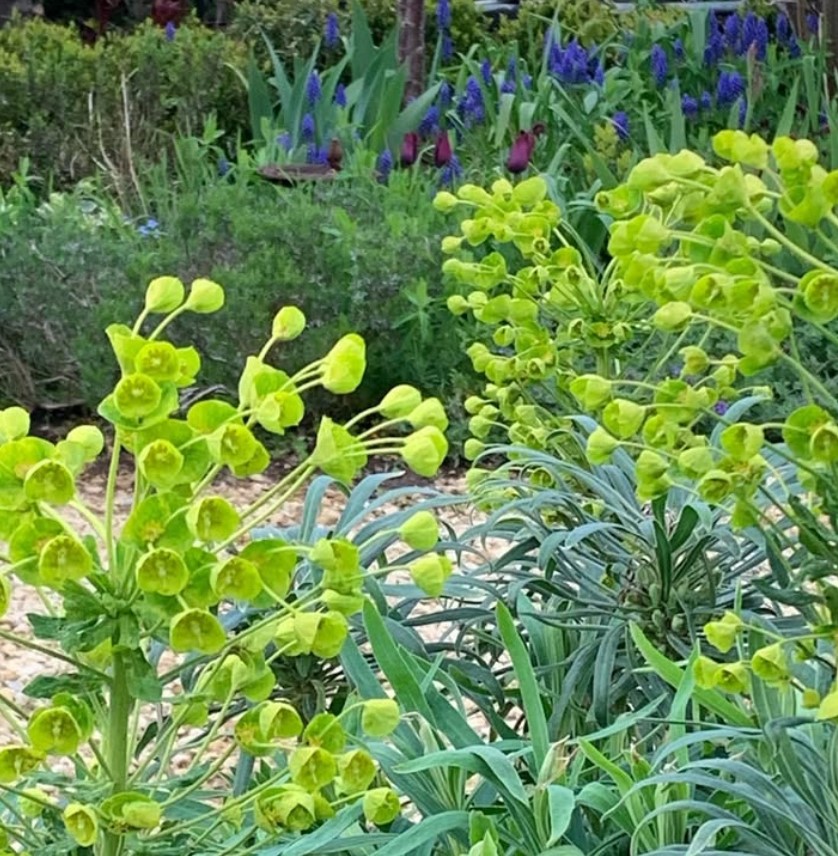
Euphorbia characias ssp. Wulfenii
This reminds me of walking in the hills around Marseille, where we lived for a while. The lime green flowers start to appear in early spring, a sign of hope! They’re a great backdrop to spring bulbs, and gradually fade to yellow, lasting into June. The rest of the year, it’s a tough, drought-tolerant, well-behaved evergreen shrub. The only maintenance is to cut the flowered stalks back to the base. Warning: the sap is toxic and irritant, so it may not be a good mix with small children or dogs. Wear gloves to prune.
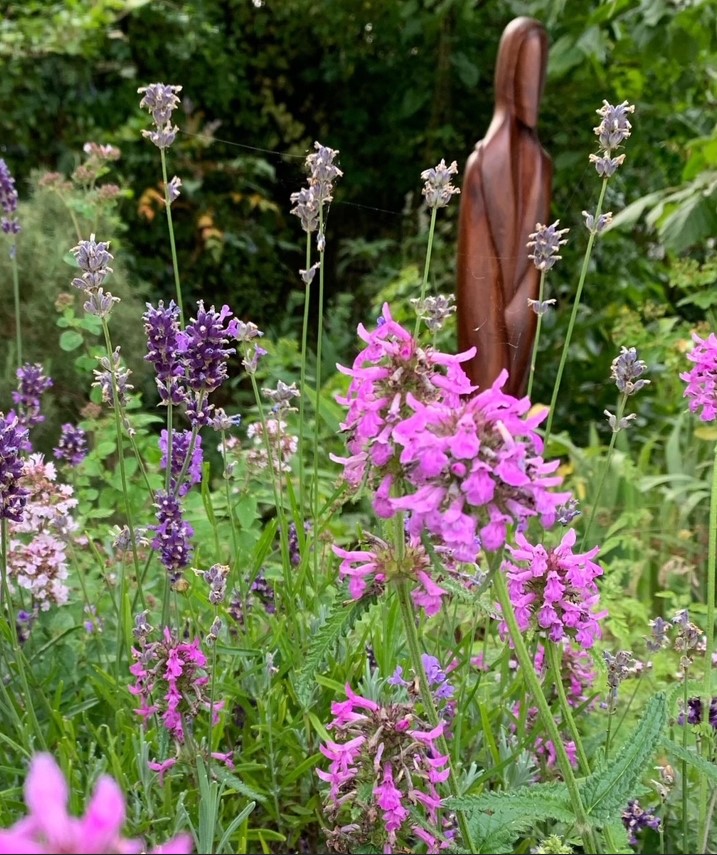
Betony – Stachys officinalis
A native perennial wild flower, with magenta flowers in mid summer, that the bees love. Drought tolerant, it will gradually spread into clumps. Great at the front or middle of a sunny border, and especially in those dry spots where nothing else will grow! A lovely combination with lavender.

Achillea Cerise Queen
Drought tolerant perennial, with feathery leaves and magenta flowers, fading to lighter pink, through summer and into autumn. The bees and butterflies love it. It will gradually spread to form clumps, and will also seed itself liberally around your garden, so you’ll never be without it!

Pale purple coneflower – Echinacea pallida
Drought tolerant tall perennial, with pink daisy-shaped flowers, daintier than its more well-known relative, Echinacea purpurea. A classic prairie flower, it works really well with Rudbeckias, as well as contrasting well with umbellifer flowers, such as achilleas. Bees and butterflies absolutely love it.
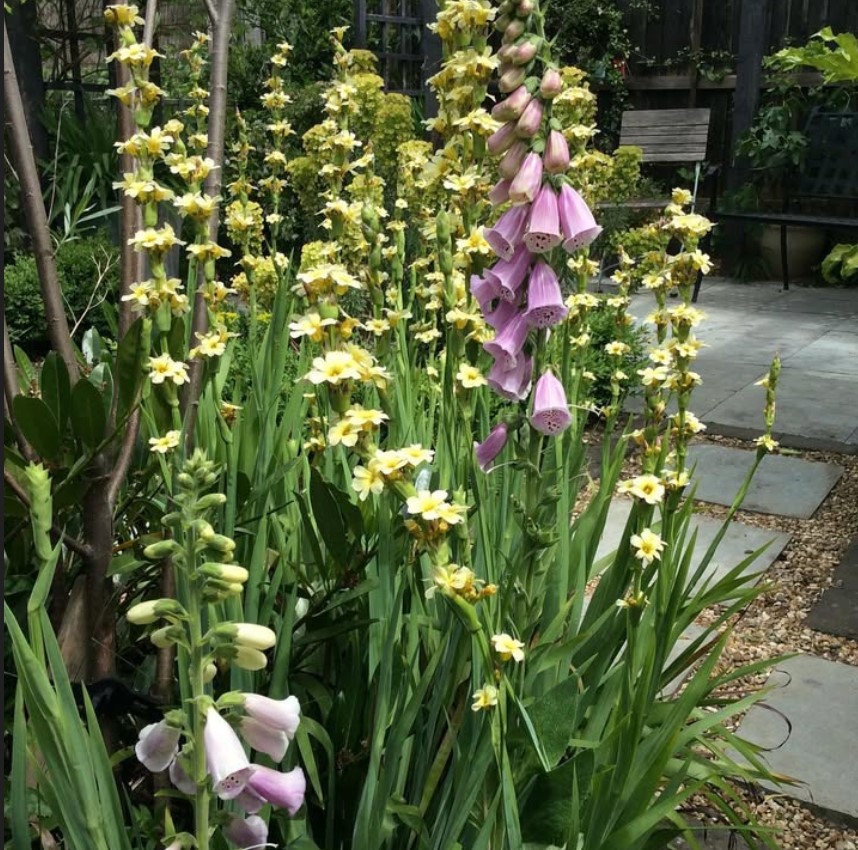
Sisyrinchium striatum – pale yellow-eyed grass
When I opened my garden, this was, this was one of the most asked-about plants. It arrived under its own steam and has happily self-seeded itself around ever since. Beautiful creamy yellow flower spires in May and June, a lovely contrast to the catmints, geraniums and sage that flower at the same time. It survives in those difficult dry areas – as in the photo, a forgotten sun-baked patch between the path and the trampoline. Deadhead promptly to stop it from seeding everywhere, and to encourage more flowers.

